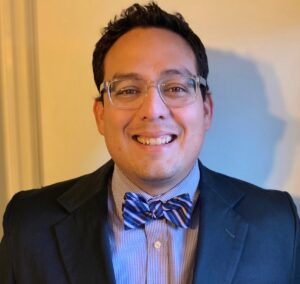
What Does Writing About Teaching Mean to You? Courage in the Diverse Classroom
Diversity is the standard for theological education. One of the dimensions of courage that we must have in our classrooms is the ability to see multiple perspectives. To word it differently, we must have the ability to put ourselves in another person’s shoes. I am reminded of the poignant song and video by Everlast, “What It’s Like.” Part of the problem in religious circles and in society in general is the complete lack of empathy. Empathy is defined simply as “the ability to understand and share the feelings of another.” It contrasts with sympathy, defined as “feelings of pity and sorrow for someone else’s misfortune.” Empathy means you are in (em) their suffering (pathos), and not only with them (sym) in their suffering (pathos).
In online environments it is difficult to create empathy. After all, we are not in brick-and-mortar classes. We sit comfortably behind a screen and are not interacting in person. However, there are still opportunities to create a sense of empathy, and consequently being present, with one another – even if we are from different walks of life and from different parts of the world. In one of my classes I had students from Africa, Latin America, and the US. The students from the US in this class also reflected an incredible amount of diversity. My students are Black, Caucasian, Hispanic/Latin@, and of mixed race heritage. We are challenged to walk with one another and, at the very least, to understand each other’s perspectives.
On the first day of class I strive to help my students get to know each other. Knowing is not merely knowing information about one another, but to enter into a relationship with one another (an affective move). The best way to do so is to listen to each other’s stories. For the last few years I have asked students to post a video of themselves in which they show an object that represents their personality and the significance of faith in their lives. I learned this tactic in a Wabash Workshop for early career faculty. Since then, I have found it to be a very helpful exercise. Most students have discussed a Bible that was gifted to them. Others post pictures of significant family members.
This tactic presents opportunities to enter into another’s reality. One of my Black students posted a video where he quietly and soberly described the only gift he ever received from his father when he was three years old. It was a small jacket his father bought while stationed as a soldier in Vietnam in 1966. It had a map of Vietnam with place names and surrounding countries embroidered on the back along with the year, 1966. The student’s name was on a front pocket of the jacket. Except for occasional visits and this lone gift, his father was completely absent from this student’s life. For my student this reflected a lack – of stability, of responsibility, of keeping one’s own word, and of a loving family.
My student later shared that when his dad passed away his thoughts toward him changed. He started missing him. He also started thinking about the opportunities he had missed with his father. The father’s own racial background and his experience in Vietnam meant his life had been marked by trauma, instability, and many struggles. Somehow, this jacket created an opportunity to empathize with his dad and to forgive him. My student stated that because of this experience, he desired to be a present male figure in his own son’s life.
Two things stood out to me. First, I thought of all the pressing contextual issues in the life of my student’s father. The country was going through the Civil Rights movement (1954-1968). His father had been shaped by segregation, Jim Crow laws, and all the psychological harm of racism.[i] Black colleagues have shared that due to moving and different circumstances they cannot trace their ancestry back for more than one or two generations. His father was also a soldier in one of the most unpopular wars. The year 1966 was marked by mounting casualties and a sense of futility as superior US firepower could not break the resolve of the Vietcong. To create a sense of community and empathy in class, I encouraged my students to think of the trauma that this father had endured and of the courage that it took for the student to be transparent and vulnerable enough to share about this object.
Second, I thought of the courage it took my student to forgive his father and to deal with this trauma as he built his own family. I thought of the resilience he demonstrated to be able to make sense of his own situation even though he may not have fully understood his father’s situation. Faith has played an important role in my student’s life, giving him language and ideas to deal with his own difficulties, and with his absent father. It also empowered him to take ownership of the situation and to pour out what he never received into the life of his own son.
My student is a living testament to the courage reconciliation requires. The classroom made us walk together with this student who had a very different history from all of us. The online classroom required us to be present with him. My comments and responses were paths to give him necessary attention and models for how to respond to those who reveal trauma and become vulnerable to us. Most importantly, I, a Hispanic/Latin@ faculty member from a different generation, was able to empathize with this student. Hopefully, this distinct affective move was able to model a way forward in our conflicted cultural milieu.
Notes & Bibliogrpahy
[i] Robert T. Carter and Thomas D. Scheuermann, Confronting Racism Integrating Mental Health Research into Legal Strategies and Reforms(Routledge, 2020).
Leave a Reply